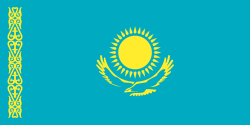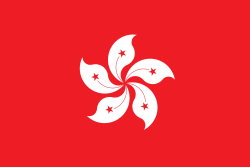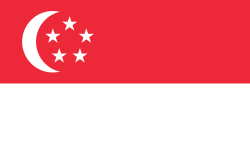Mistrovství Asie ve sportovním lezení 2016
| 24. Mistrovství Asie ve sportovním lezení | |
|---|---|
 | |
| Základní informace | |
| Sport | sportovní lezení |
| Země | |
| Organizace | IFSC, ACSC, CMA |
| Web | ifsc-climbing.org cmasports.sport.org.cn |
| Obtížnost | |
| Město | Tu-jün |
| Datum | 3.-6. srpna |
| Zlato | |
| Stříbro | |
| Bronz | |
| Rychlost | |
| Město | Tu-jün |
| Datum | 3.-6. srpna |
| Zlato | |
| Stříbro | |
| Bronz | |
| Bouldering | |
| Město | Tu-jün |
| Datum | 3.-6. srpna |
| Zlato | |
| Stříbro | |
| Bronz | |
← 2015 20162017 → | |
Mistrovství Asie ve sportovním lezení 2016 (anglicky: Asian Continental Championship) se uskutečnilo již po čtyřiadvacáté, v čínském Tu-jünu v provincii Kuej-čou ve třech disciplínách (v lezení na obtížnost, rychlost a v boulderingu).[1]
Průběh závodů
Celkem měli domácí závodníci devět finalistů, z toho v lezení na obtížnost a rychlost čtyři medailisty (1/2/1).
Výsledky mužů a žen
| obtížnost | rychlost | bouldering | |||
|---|---|---|---|---|---|
| muži | ženy | muži | ženy | muži | ženy |
| 1. | 1. | 1. | 1. | 1. | 1. |
| 2. | 2. | 2. | 2. | 2. | 2. |
| 3. | 3. | 3. | 3. | 3. | 3. |
| 4. | 4. | 4. | 4. | 4. | 4. |
| 5. | 5. | 5. | 5. | 5. | 5. |
| 6. | 6. | 6. | 6. | 6. | 6. |
| 7. | 7. | 7. | 7. | — | — |
| 8. | 8. | 8. | 8. | — | — |
| 8 finalistů | 8 finalistek | 4/8 finalistů | 4/8 finalistek | 6 finalistů | 6 finalistek |
| 26 semifinalistek | 16 semifinalistů | 16 semifinalistek | 20 semifinalistů | ||
| 34 mužů | 33 žen | 22 mužů | 17 žen | 39 mužů | 29 žen |
Medaile podle zemí
| pořadí | stát | celkem | |||
|---|---|---|---|---|---|
| 1. | 4 | 2 | 1 | 7 | |
| 2. | 1 | 2 | 1 | 4 | |
| 2. | 1 | 2 | 1 | 4 | |
| 4. | 0 | 0 | 2 | 2 | |
| 5. | 0 | 0 | 1 | 1 |
Zúčastněné země
| (dle nejlepšího závodníka) | ||||||
|---|---|---|---|---|---|---|
| obtížnost | rychlost | bouldering | ||||
| muži | ženy | muži | ženy | muži | ženy | |
| 1. | ||||||
| 2. | ||||||
| 3. | ||||||
| 4. | ||||||
| 5. | ||||||
| 6. | ||||||
| 7. | — | |||||
| 8. | — | |||||
| 9. | — | |||||
| 10. | — | |||||
| 11. | — | — | ||||
| 12. | — | — | — | |||
| (13) | 12 | 12 | 10 | 6 | 12 | 11 |
Odkazy
Reference
Související články
Externí odkazy
Média použitá na této stránce
The Chinese character 書, in semi-cursive script. The meaning in English: "book", "writing", "calligraphy".
This file is used as the logo of WikiProject Writing systems on the English Wikipedia.
bendera Indonesia
Chinese Taipei Olympic Flag. According to the official website of Chinese Taipei Olympic Committee, Blue Sky(circle) & White Sun(triangles) above the Olympic rings is neither the National Emblem of the Republic of China, nor the Party Emblem of Kuomintang (KMT), but a design in between, where the triangles do not extend to the edge of the blue circle, as registered at International Olympic Committee in 1981 and digitally rendered in 2013. Besides, the blue outline of the five-petaled plum blossom is broader than the red one. Moreover, the CMYK code of the blue one and the Blue Sky & White Sun is "C100-M100-Y0-K0", and different from the Olympic rings (C100-M25-Y0-K0). Note that it's the only version recognized by IOC.
Flag of Iran. The tricolor flag was introduced in 1906, but after the Islamic Revolution of 1979 the Arabic words 'Allahu akbar' ('God is great'), written in the Kufic script of the Qur'an and repeated 22 times, were added to the red and green strips where they border the white central strip and in the middle is the emblem of Iran (which is a stylized Persian alphabet of the Arabic word Allah ("God")).
The official ISIRI standard (translation at FotW) gives two slightly different methods of construction for the flag: a compass-and-straightedge construction used for File:Flag of Iran (official).svg, and a "simplified" construction sheet with rational numbers used for this file.
An icon that represents a gold medal
An icon that represents a silver medal
An icon that represents a bronze medal
The national flag of Kingdom of Thailand; there are total of 3 colours:
- Red represents the blood spilt to protect Thailand’s independence and often more simply described as representing the nation.
- White represents the religion of Buddhism, the predominant religion of the nation
- Blue represents the monarchy of the nation, which is recognised as the centre of Thai hearts.
Pictogram for climbing, inspired by the olympic pictograms listed in Category:Summer Olympics pictograms














